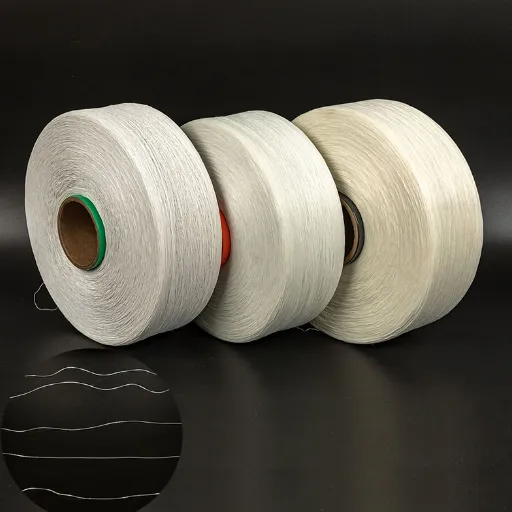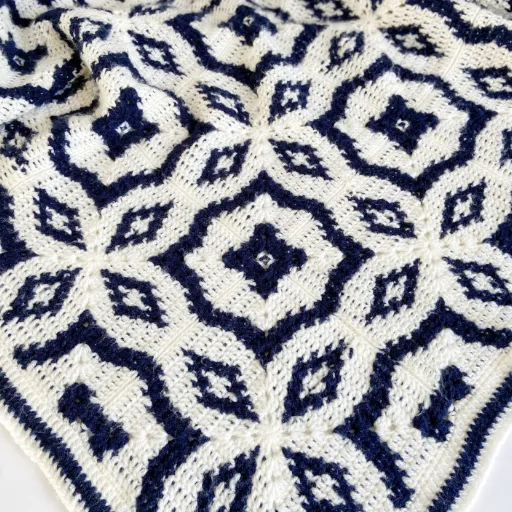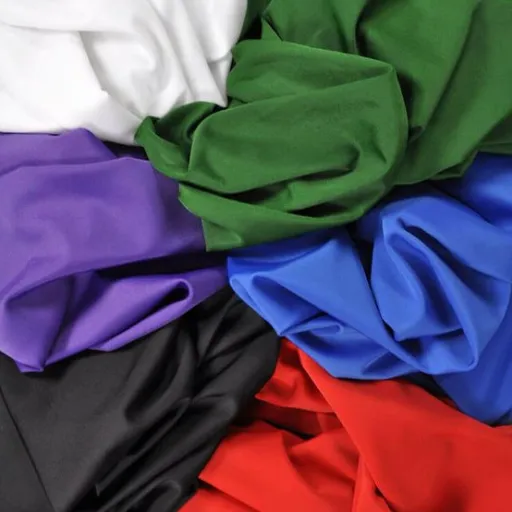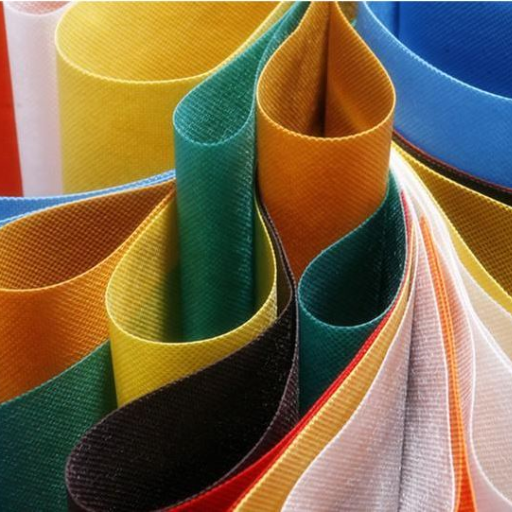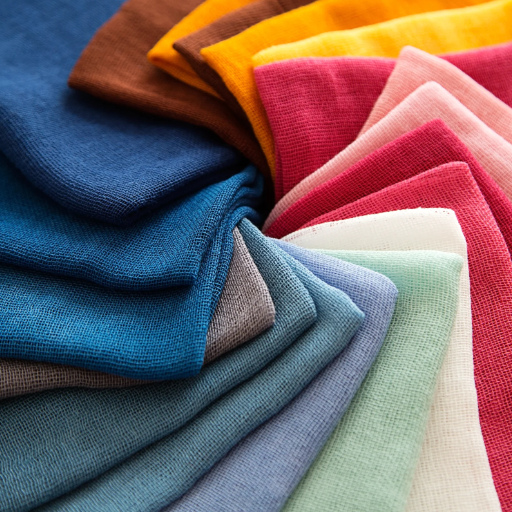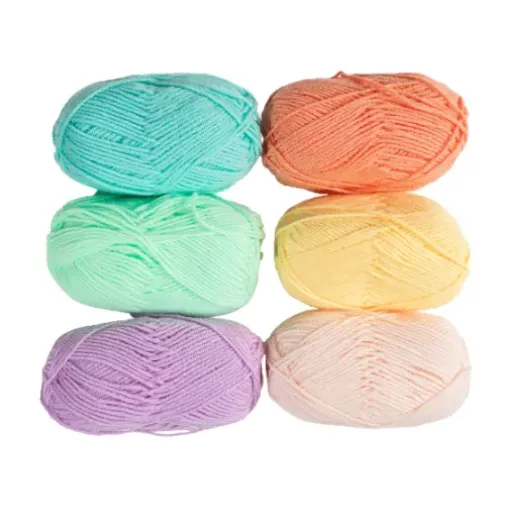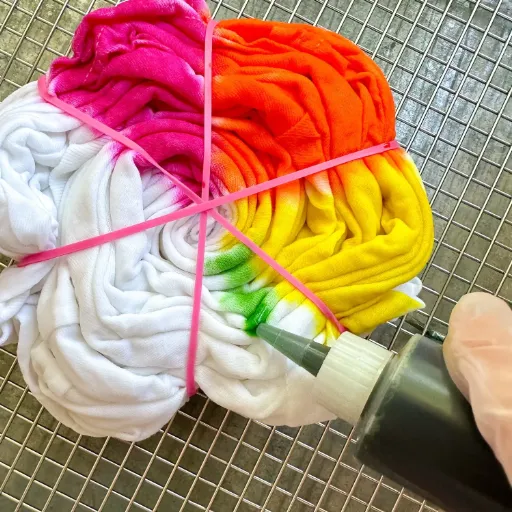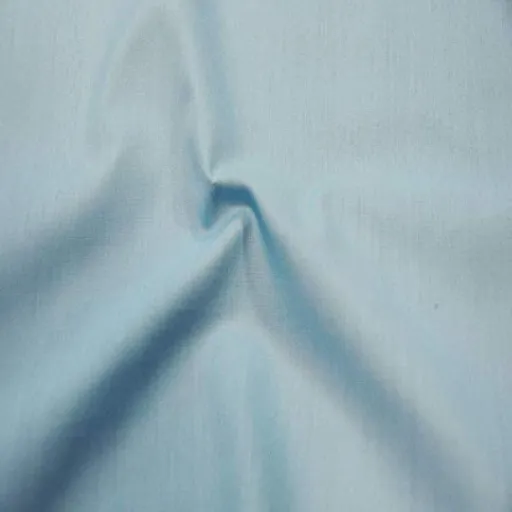When it comes to selecting the appropriate yarn for your next crafting endeavor, there are a few important considerations: texture, durability, price, and usability. Two of the most versatile synthetic yarns are acrylic and polyester yarn, with several similarities but yet major contrasts that can influence your projects. Tuning into these differences may thus help in choosing between the knitting of a cozy sweater or crafting a colorful blanket. In this article, the distinctive properties of acrylic and polyester yarn are considered for their advantages and disadvantages to best suit your creative activities.
Introduction to Acrylic and Polyester
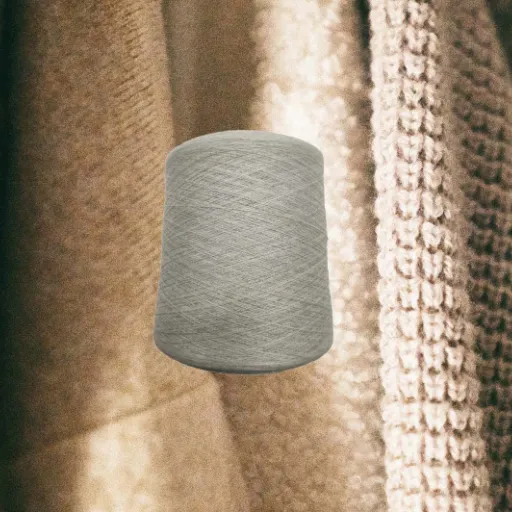
Overview of Acrylic Yarn
Acrylic yarn is a synthetic fiber usually used for synthetic yarns; it is durable, cheap, and versatile. It is mainly created from a polymer called acrylonitrile to provide softness and warmth much like that of wool from natural fibers. This fiber of yarn being lightweight and easy to handle, has gained popularity for the novice as well as for the seasoned crafter.
Acrylic yarn is yours for the picking at cheap rates. This cheap choice lets one finish large projects indentations, blankets, or sweaters without compromising on quality. Also, it prevents the fiber and mildew activities and hence makes it perfect to be used and stored for long periods. Acrylic yarns are present in several colors and textures that will satisfy different hues of creator-wish.
There, of course, are some disadvantages for acrylic yarn. Less breathable than natural fibers, it may not be so ideal for clothing in summer landscapes. Further on, over time, it tends to pill with repeated wear, but is not as environmentally friendly because it has a synthetic composition. Aside from these inconveniences, acrylic yarn continues being of practical and versatile application in crafting-related projects whenever price and ease of use are a factor.
Overview of Polyester Yarn
Polyester yarn is one of the most popular synthetic fibers bearing strength, economy, and operational options. It is processed from polymer compounds obtained from petroleum to form strong, resilient threads. Polyester yarn, prized for its abrasion resistance and ability to retain very bright colors without fading, finds applications in many arenas, especially textiles.
One of the great advantages the polyester yarn offers to the consumer is that it requires very little attention. It will never shrink, stretch, or wrinkle, making this type of yarn great for garments, upholstery, and even home goods such as curtains or bedspreads. Polyester yarn dries fast and resists moisture, which keeps mildew and mold at bay, properties that are appreciated by outdoor fabrics and athletic wear.
Polyester yarn is not without some disadvantages, as it is less breathable than natural fibers such as cotton and can be uncomfortable under hot or humid circumstances. Another aspect and environmental one is that polyester yarn originates synthetically, with its production relying upon non-renewable resources, culminating in plastic waste. Nonetheless, given the highest durability offered by this yarn, one is easy to manage, and one can easily afford to use it in crafts or manufacture.
Important of Knowing Differences
Knowing the differences between materials is essential in making decisions application-wise. The difference in materials will lie within their durability, cost, environmental acceptability, and comfort. For example, polyester is basically known to stand strong and cheap, and thus is chosen for projects where the materials need to last longer. However, natural fibers, like cotton, may provide more value when it comes to breathability and comfort, which might be a preference under certain conditions, such as in warm weather.
Environmental considerations form one of the factors in establishing these distinctions. In the production of polyester, its ingredients come from non-renewable resources, and upon being discarded, it will also contribute to plastic waste, making polyester a less sustainable choice. Thus while most natural fibers come from renewable sources and are more prone to decomposition, they leave a less intense environmental footprint. The ability to track and categorize these distinctions would, in essence, allow one to align pragmatic concerns with environmental concerns during the selection of materials for their own use or for industrial use.
Most importantly, in terms of understanding the differences between these two classes of materials, one can better harmonize them with his or her specific needs and values. It goes without saying that one way of optimizing one’s outcome, whether an individual or an industry, comprises an understanding of alternatives relative to cost efficiency, comfort, and sustainability. Thus, this knowledge aids the user in making decisions and encourages them to deepen their level of thoughtfulness and responsibility with respect to material use.
Key Differences Between Acrylic and Polyester
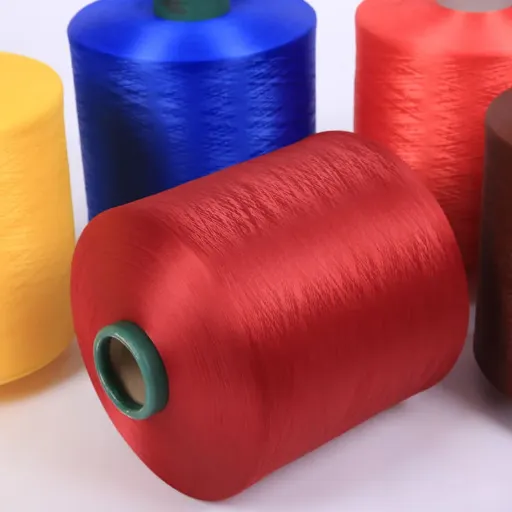
Material Composition and Properties
Acrylic has polyacrylonitrile as its chief polymer and is thus considered a synthetic fiber. It is very lightweight, has a soft feel, and is good for insulation, things that have caused it to find uses in the making of sweaters, blankets, and warm clothes of all sorts. It feels like wool but can resist fading and weather away because of some lesser degree of durability when compared to most fibers, and can sometimes pill as the years pass by.
Polyester, conversely, is the polymerization product of petroleum-based compounds: ethylene glycol and terephthalic acid. It is durable to breakage; it cannot be stretched or shrunk; and it can wick moisture away efficiently. Hence, it is widely considered for active wear, outdoor gear, and sometimes furnishings. Unlike acrylic, polyester resists pilling more and holds on to its shape and colors even after long use.
In terms of categories of sustainability, polyester can be recycled and will further bring into scope greener ways of production. Whereas acrylic proves to be less sustainable due to being non-biodegradable and having a greater environmental impact during its production. Understanding these differences helps to select the material that best fits a specific need, considering its performance, durability, and environmental implications.
Durability and Longevity
When assessing fiber materials regarding the durability and life span of polyester and acrylic, one must keep in mind the chemical properties, their resistance against natural elements, and real-life performances. Polyester is very durable and resistant to stretching, shrinking, and abrasion; thus, appropriate for outdoor and sporting uses. It would further seem from studies that while forming the fabric for making garments, polyester endures as many as 200 cycles in the laboratory before showing signs of serious wear, stressing the longevity in various atmospheres.
Acrylic, on the other hand, is highly praised for durability and weather resistance; yet, in comparison to polyester, it generally stands on the weaker side against the rigors of being stretched repeatedly and, thus, tends to lose shape over time. The most important feature that sets acrylic apart is resistance to UV light degradation. Brand-new industry statistics reveal that acrylic fibers exhibit remarkable color brilliance for a long time even after exposure to direct sunlight: hence outdoor furniture and sunshades are made from acrylic.
From the point of view of a lifetime, they possess different qualities. Where flexibility, tensile strength, and extended wear under dynamic conditions are concerned, polyester dominates; acrylic stands atop in aesthetics and structural integrity; they require long-term protection from direct sunlight and environmental stresses. The above knowledge, paired with the sustainability debate, will furnish decision-making power for specific applications.
Comfort and Wearability
The comfort and wearability largely depend on specific properties that polyester and acrylic possess in their being. Usually, Polyester Imparts characteristics like being lightweight, durable, and moisture-resistant. Polyester wicks moisture away from the body, which is perfect if you’re doing any active wear or warm-weather wears. Sometimes, polyester might not feel very soft against the skin, especially when it is not blended with other fabrics or properly finished.
With acrylic, the emphasis is given to softness and warmth. It is probably closest to wool of all man-made fibers in texture, making it a very comfortable fabric in cold weather. The fibers allow for some breathability and insulation, which allows just the right amount of coziness without feeling too heavy. The downside is that the fabric may sometimes retain heat and be less pleasant to have on your feet in Hot and Humid.
Very much so, comfort and wearability depend on what they are used for and personal preference. In other words, polyester is great for high-performance wear or athletics, thanks to practicality and breathability, but for something casual and winter-related, acrylic has a little edge in softness and warmth. Considering the environment and application helps an individual pick the right material for comfort.
Advantages of Acrylic and Polyester
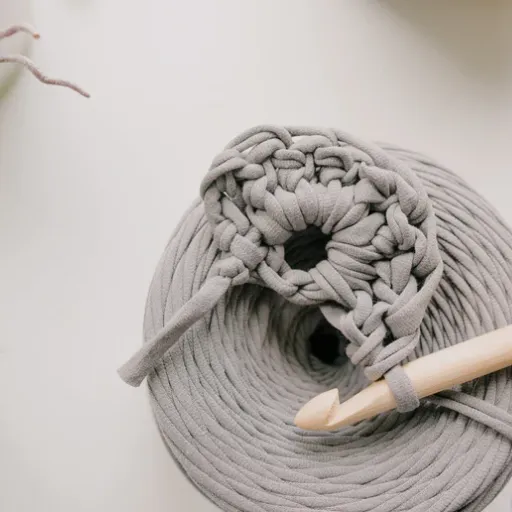
Benefits of Acrylic Yarn
Affine to natural fibers in color, texture, and aura are considered the primary advantages of keeping acrylics cheap, given that the hungry pocket can never afford them. A few of the peculiarities are that acrylic yarn is a lighter-weight yarn and easier to work with in crafting activities such as knitting or crocheting blankets, scarves, or sweaters.
In addition, acrylic yarns repel moths and pests, unlike natural fibers, and do not form dullness after many washes and usages. As per recent trends, acrylic yarns are slowly becoming a landing ground for the modern generation, thanks to their low maintenance properties, being machine washable, drying quickly, and somewhat resistant to shrinkage or stretch. The increasing demand for acrylic fiber across the globe continues to fuel these operations, supported by its diversified products being well accepted in both fashion and home decorative textiles (2023 studies).
The advancement of manufacturing techniques permits the production of more environmentally friendly acrylic, resulting in a lessened effect on the environment. The huge variety of textures, weights, and colors available in acrylic yarn is an easy choice for beginners and experienced crafters alike when it comes to reliable and workable options in their projects.
Benefits of Polyester Yarn
Durability and strength make polyester yarn suitable for a greater number of applications. Stretching and shrinking effects are prevented, thus projects made with such yarn tend to hold their shapes over time. It is known that polyester yarn resists abrasion so well that it is preferred for items subjected to heavy use or washing.
Moisture absorption and polyester yarn are other characteristics. Because of this low absorption of moisture, they dry quickly and are resistant to mold and mildew, so they find very useful applications in outdoor and high-humidity areas. Therefore, polyester yarn remains brightly colored even after long exposure to sunlight or numerous washes, ensuring better longevity of decorative and utilitarian works.
Whilst polyester yarn is an economical option ideal for both beginner and experienced craft persons, it holds a versatility of sorts: being available in an array of textures, weights, and shades for a plethora of projects. This versatility ensures that the finished product never compromises style or quality for the sake of reliability, be it bags and garments or homespun home decor, thus garnering the affection of all involved in crafting and textiles.
Comparative Analysis of Advantages
Polyester yarn prevails over many other natural fibers in a set of aspects considered key. The durability of the fiber is one such advantage; polyester is nonstretch and nonshrinkable and, hence, will not change its shape or appearance over time. This property is highly advantageous in cases where the item is being used regularly, for example, bags or household textiles like cushion covers. Higher strength and elasticity favor polyester over cotton yarn in forms of stress application.
Accessibility and price came next. Polyester yarn is generally better available and cheaper than wool or silk. The matter of cost is a huge concern when crafters want to execute mass production, and polyester yarn assures them of plentiful colors and finishes possible with its use.
The most fundamental difference compared to natural fibers is that they are moisture-resistant. Polyester fiber acts as a moisture-wicking yarn and is suited for outdoor weather-related articles. Also, mildew and insect attacks become dangerous threats for implants, yet this polyester has a certain resistance. It gives an advantage in terms of longevity. Therefore, it has become an option preferred in industrial and home craft works.
Because of further technological improvements in manufacturing, eco-friendly yarns are becoming more prevalent. Recycled polyester-made yarn from discarded plastic bottles is influencing the market to some extent to lessen environmental degradation. This eco-conscious alternative offers the conscientious choice of being both functional and inexpensive, bringing numerous benefits to the environmentally aware.
When it goes into packaging, these factors- strength, cost, and versatility-polyester yarn becomesthe most commonly used fiber in contemporary crafts and helps crafters in every sphere with the development of durable and top-quality things.
Disadvantages of Acrylic and Polyester
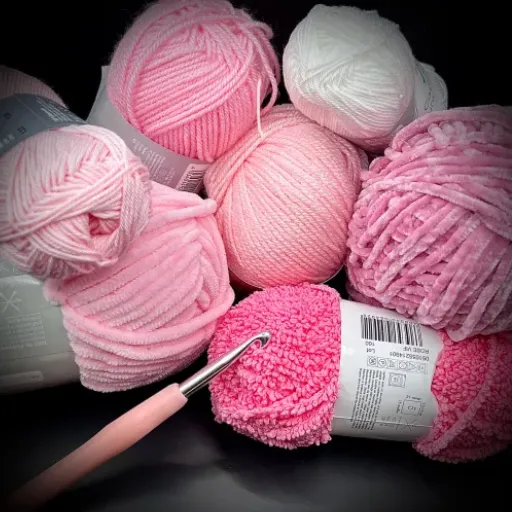
Limitations of Acrylic Yarn
Acrylic yarn, cheaper and widely produced, however, suffers from a few limitations that affect its functionality and perhaps even environmental footprint. First and foremost is the lack of breathability compared with other natural fibers such as cotton or wool. Therefore items made from acrylic yarn tend to get quite uncomfortable to wear since it becomes hot and moist under certain conditions.
Next is the environmental impact. Acrylic yarn is made of synthetics crafted from petroleum, a non-renewable resource. According to a recent report, synthetic fiber production, including acrylic, in significant levels does contribute to greenhouse gas emissions. In addition, this yarn is not biodegradable and thus can remain in this environment for some hundreds of years, aiding in plastic pollution.
One major usage has durability issues when exposed to high heat. The yarn melts or loses shape upon temperatures that would normally be endured by natural fibers. So, this cannot be used for settings like kitchen utilities or any garments that might need heavy ironing.
Furthermore, even with the advancement in modern manufacturing technologies, the yarn remains somewhat devoid of that soft, hot-and-cold feel that comes with natural fiber, distressing any craftsman looking for that very special touch of beauty and elegance in their project. Consequently, if technology has made strides to provide acrylic with better texture through the years, it still lagged behind other allowed fibers such as merino and bamboo in giving the user experience.
Through hindrances such as these, consumers can weigh the benefits and drawbacks of acrylic yarn to make informed and viable decisions.
Limitations of Polyester Yarn
Being widely used due to its cost-effectiveness and durability, the polyester yarn has certain limitations that may make it unsuitable for some projects. One of the major limitations lies in its lesser breathability. Being a synthetic fiber, it traps heat and moisture internalize. Therefore, you would hardly want to make garments for a warm weather or for long use out of it. Under such warm atmosphere, Polyester would cause discomfort and excessive sweating.
The other is pollution. Polyester is made from petroleum, that is not renewable, and the manufacturing process results in greenhouse gases. Also, polyester yarn does not biodegrade, so the discarded polyester materials stay around for a long time. Washing polyester garbs releases microplastics in waterways, thereby polluting the global ecosystem and threatening marine life.
And lastly, the softness and natural feeling that cotton, wool, or bamboo offer sometimes are lacking from polyester yarn. Despite all the technological advancements that have been made in softening synthetic yarns, polyester generally feels less luxurious against the skin; hence it is less preferred for projects demanding tactile comfort. Such demerits reinforce the importance of making an informed choice when it comes to selecting yarn for craft or manufacture, whose very criteria should include material properties and the environment.
Comparative Analysis of Disadvantages
In terms of sustainability and comfort, the disadvantages are opposed when comparing polyester against natural fibers like cotton and wool. Environmentally unfriendliness has been generally cited as one of the major disadvantages of polyester production. Data from the International Journal of Life Cycle Assessment show that producing one kilogram of polyester fabric results in about 40% more greenhouse gas emissions than producing the same quantity of cotton fabric. In addition, the United Nations Environment Program mentioned in 2023 that such synthetic fibers as polyester contribute to the pollution of water bodies by releasing microplastics during washing. These microplastics are non-biodegradable and pose dire threats to both marine life and the food chain.
A further important distinction to note is that cotton is lauded for its perspiration absorption and hence has a natural breathability, whereas polyester is considered unfit to be worn in warm climates for prolonged periods since it usually traps heat and perspiration. Wool is much warmer and flame-resistant by nature in comparison with polyester, that has to be artificially treated to possess these qualities.
In view of these variables, recent data and scientific studies demonstrate objectively why environmental accounting should be placed alongside functional characteristics while seeking the best choice of fiber. Becoming aware of this will foster a more environmentally friendly response in the choice of materials.
Practical Applications of Acrylic and Polyester
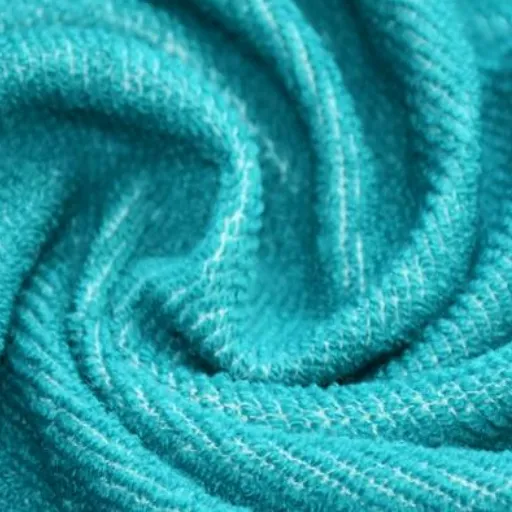
Uses of Acrylic Yarn in Industries
Due to its very inexpensive nature and due to being multi-purpose, acrylic yarn enjoys great popularity amongst many industries. It is used widely in the textile industry for making sweaters, blankets, scarves, and other knitted articles. The characteristic soft touch and the wool-like texture are preferred over natural fibers, especially in scenario where the consumer or manufacturer is conscious about the cost.
The other common use for acrylic yarn is manufacturing furniture upholstery, rugs, and curtains for home décor. They are made with an ability of resistance to faresist ding, staining, and wearing, which will ensure embroideries will under active usage of a lifetime. These considerations are great for making designs being highly trafficked usage areas or an inquisitive populace under sunlight.
The crafting sector is another area where acrylic yarn finds great demand. Local and professional artisans prefer handling crochet, knitting, and weaving projects with it because of its ample existence in a rainbow of colors and many thicknesses. Because of its ability to lend itself to other creative processes, this yarn is a standard material both for some professionals in the craft field and for initial-level crafters.
Uses of Polyester Yarn in Industries
The applications of polyester yarns vary across a multitude of industries due to its durability, strength, and economical prices. Primary uses of polyester yarn include textile manufacture along with the production of home furnishings such as curtains, upholstery, and bed linen carpets, amongst others. The material is preferred for these purposes because of its nature of being wrinkle-resistant, shrink-resistant, and stretch-resistant.
The outdoor and sportswear industries are some of the major users of polyester yarn, given that its properties allow it to dry quickly and wick moisture well, making it ideal for activewear, jackets, and outdoor equipment. Until 2028, the global polyester yarn market is expected to sustain a compound annual growth rate (CAGR) of 5.6%, based mostly on the increase in demand for sports and functional textiles, according to latest market reports.
Industrial textiles are another major field of application for polyester yarns. High tensile strength of polyester yarns enables their use in making ropes, conveyor belts, tire cords, and safety harnesses. Polyester yarn is also used for seat belts and interior upholstery in the automotive industry.
More recent usages of polyester yarn include its infusion into 3D printing filaments and recyclable materials, thus putting forth another step into pioneering sustainable and eco-friendly manufacturing processes. With advances in technology, the application areas for polyester yarn continue to grow in innovations such as smart textiles and composite materials, and the yarn remains an industrial lifeline.
Consumer Products Made from Acrylic and Polyester
Used widely in uncommon consumer products because of varied characteristics and the need for versatility, acrylic and polyester. Acrylic is generally found in clothing articles such as sweaters, scarves, and socks when it needs to feel soft and convey a wool-like comfort and warmth. An acrylic will also be used in blankets and for upholstery and carpet, demanding that it be very hard-wearing and resistant to fading. It is, therefore, in high demand for garden furniture and accessories resistant to weathering and UV degradation.
Polyester, otherwise, is particularly admired for durability and wrinkle resistance. It is crucial to manufacture garments such as shirts, pants, and dresses. With activewear being another kind, polyester dries on the run and works for any outdoor gear. Besides, however, the textile is used in home textiles such as curtains, bed linens, and cushions, where it adds to motivating core strength and stain resistance for durable use. These further go into bags and tents, even into car interiors.
Both acrylic and polyester are valuable materials for eco-friendly product development. Recycled polyester, for example, is used in sustainable fashion and in bags that are meant to be reused, thereby lessening the environmental impact. Design innovation using acrylic, on the contrary, allows for lightweight yet sturdy fixings for home décor. Both materials, versatile as they are, have continued from time immemorial to be used for the manufacture of diverse consumer goods to meet a variety of needs that change with market trends.
Frequently Asked Questions (FAQ)
Q: How would one differentiate acrylic from polyester?
A: The major differences between acrylic and polyester are their base and properties. Acrylic is a synthetic fiber from polymerized acrylic acid, while polyester is polyethylene terephthalate.” “Acrylic is considered softer,” says a textile expert, “giving any fabric a more wool-like touch.” “Polyester,” she added, “is used mostly for durability and resistance to wear and tear.”
Q: Which one is best for wearing: acrylic or polyester?
A: Unlike an expert, the way to good fabric varies with preference and usage. Acrylic is considered softer and warmer, hence being more celebrated for the cold months. Polyester is used when durability, moisture wicking, and drying time are paramount-so it should be considered better wear for activewear.
Q: What are the property-related comparisons of polyester to acrylic?
A: Polyester’s primary characteristics are strength, resistance to shrinking and stretching. It is also somewhat water-repellent in nature, aiding in the use for outdoor activities. In contrast, acrylic is softer and warmer and cannot, perhaps, stand up to serious abrasion better than polyester.
Q: What are the performance attributes of acrylic and polyester fabrics under great weather?
A: During summer, polyester is often favored for its ability to manage moisture and keep the wearer dry. While acrylic does keep warmth, it might be an equilibrium choice for heat due to trapping nearly all heat. As a lightweight acrylic shirt, it could work for some drinking.
Q: Do garments of acrylic or polyester suit home furnishings?
A: Usually made for clothes and home furnishing, both acrylic and polyester textile are chosen differently for their different uses: Acrylic is chosen for softness and warmth, while polyester is chosen for its durability and ease of care. When fabric design is considered for home use, it is always brought into question as to what each room requires and for what purpose.
Q: Can the acrylic and polyester fibers be mixed?
A: Yes, acrylic and polyester can be blended so that the resulting fabric possesses all the qualities of both materials. Essentially, such a blend provides softness and warmth; therefore, it is suited for many uses, including apparel, furniture fabrics, and so on.
Q: What kind of clothing is usually made of acrylic or polyester?
A: Acrylic is used for sweaters, scarves, and blankets due to its warmth and softness. Polyesters are great for active wear, sports jerseys, and outdoor clothing because they are more durable. The activity and the climate would be an important factor to consider when deciding between acrylic and polyester.
Q: Does acrylic take up any moisture like cotton or wool?
A: Acrylic cannot absorb moisture, unlike cotton and wool, which are natural fibers. This makes acrylic ideal for garments designed not to get wet. Polyester shares this trait, and so both fabric types are suitable for various climates and activities.
References
- Big Z Fabric Blog: Two Common Synthetic Fibers – Polyester vs Acrylic – This article discusses the properties, uses, and differences between acrylic and polyester.
- Quora: What is the difference between polyester and acrylic? – A community-driven discussion on the key differences between these two materials.
- Thai Polyester Blog: What’s the difference between Polyester Yarn and other synthetic yarns? – A detailed explanation of the chemical composition and unique properties of polyester and acrylic.









